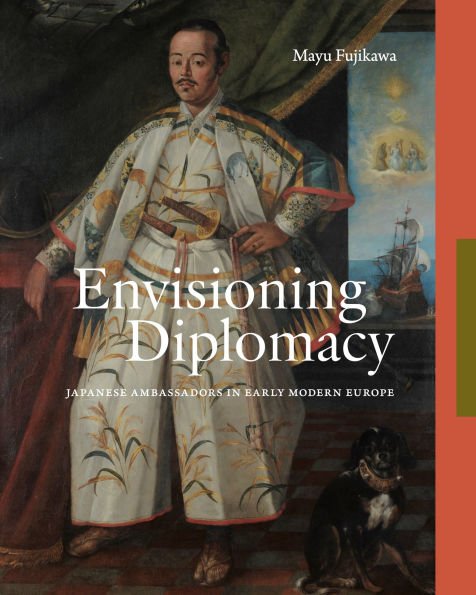Drawing on extensive and geographically expansive archival research, art historian Mayu Fujikawa investigates how the embassies were received and either assimilated or differentiated at European courts. She demonstrates how delegates’ gifts to their hosts, their Europeanized kimonos, and the Western clothes they wore while traveling functioned as tools of soft diplomacy. Fujikawa also shows how printed materials functioned much as news does today, promoting the embassies widely and conveying information about the guests and their striking physical appearance.
Envisioning Diplomacy offers a fascinating look at the political, social, and cultural meanings of visual materials created around the embassies and should be of great interest to scholars, students, and general readers interested in early modern European art and history, costume history, diplomatic history, and Japanese and global studies.
Drawing on extensive and geographically expansive archival research, art historian Mayu Fujikawa investigates how the embassies were received and either assimilated or differentiated at European courts. She demonstrates how delegates’ gifts to their hosts, their Europeanized kimonos, and the Western clothes they wore while traveling functioned as tools of soft diplomacy. Fujikawa also shows how printed materials functioned much as news does today, promoting the embassies widely and conveying information about the guests and their striking physical appearance.
Envisioning Diplomacy offers a fascinating look at the political, social, and cultural meanings of visual materials created around the embassies and should be of great interest to scholars, students, and general readers interested in early modern European art and history, costume history, diplomatic history, and Japanese and global studies.

Envisioning Diplomacy: Japanese Ambassadors in Early Modern Europe
256
Envisioning Diplomacy: Japanese Ambassadors in Early Modern Europe
256
Product Details
| ISBN-13: | 9780271099255 |
|---|---|
| Publisher: | Penn State University Press |
| Publication date: | 10/14/2025 |
| Pages: | 256 |
| Product dimensions: | 8.00(w) x 10.00(h) x 0.94(d) |
